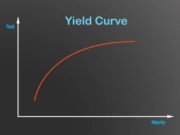What is ‘Main Home’
A term used by the Internal Revenue Service (IRS) to define the home a taxpayer has lived in most of the time during a given taxation year, or the only home a taxpayer owns. The classification of a taxpayer’s main home is important when considering gains resulting from the sale of a main home.
Explaining ‘Main Home’
When you sell your home, you may be able to exclude the gains from your income for tax purposes if you pass the ownership and use tests. If over the previous five years you have owned the home for more than two years, and it was your main home for more than two years, then you can exclude up to $250,000 ($500,000 for joint filers) in a given tax year.
Losses resulting from the sale of your main home cannot be deducted.
Further Reading
- The home economics of e-money: velocity, cash management, and discount rates of M-Pesa users – www.aeaweb.org [PDF]
- The new home economics at Colombia and Chicago – www.tandfonline.com [PDF]
- The “new home economics:” Retrospects and prospects – academic.oup.com [PDF]
- Independent individual decision-makers in household models and the new home economics – link.springer.com [PDF]
- Stages of soybean development – lib.dr.iastate.edu [PDF]
- Classification and the definition of a discipline: The Dewey decimal classification and home economics – www.jstor.org [PDF]
- Environmental education: a task for home economists – onlinelibrary.wiley.com [PDF]
- Self-organized complexity in economics and finance – www.pnas.org [PDF]


































